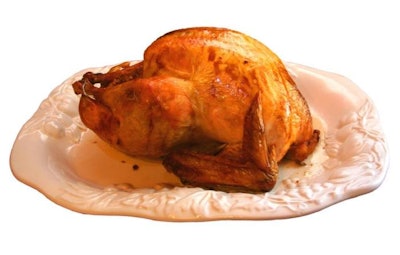
As years pass by, each one with its holiday season, the amount of turkey consumed continues to remain mostly the same, I dare to say, throughout Latin America. Why?
I could understand this situation in a country like Argentina, where perhaps one extra kilo of animal protein in the diet no longer fits in. But, what about other countries? Why does turkey meat not take off in consumer preferences? Do we only eat turkey because the company gives it to us as a Christmas present?
With just over 61 million turkeys produced in 2017 (according to the Industria Avicola database), Latin America contrasts with the 243 million birds produced by U.S. (as per USDA data). Also, Americans consumed about 7.5 kilograms per person per year of turkey meat, while in Chile's per capita consumption is 4 kilograms, in Brazil 2 kilograms, 1.5 kilograms in Mexico and 1.25 kilograms in Peru.
Turkey is a native bird of Mexico (Meleagris gallopavo), where it is known as “guajolote” (Meleagris gallopavo mexicana), instead of the Spanish “pavo.” In 2017, Mexico barely produced 10,000 metric tons of turkey meat (from commercial production), as opposed to the 3.4 million metric tons of chicken and 2.7 million metric tons of eggs. Turkey is widely accepted in rural areas, for special celebrations, but in those cases it is locally and backyard produced.
Acceptance has grown in the urban population, mainly because it is a lean meat and it is used in sausages. Mexico imported U.S. turkey cuts, especially for hams. It should be noted that the USA Poultry & Egg Export Council (USAPEEC) has worked with several companies in Mexico to develop products such as turkey fillets and preformed products.
In Spain, for example, although turkey production is small compared to the broiler sector, Spanish turkey producers enjoy a growing demand and popularity, which has significantly contributed to increased production.
Efforts are being made. The National Poultry Producers Association (UNA) of Mexico will carry out a consumption campaign in 2019. Peru will export turkeys to Ecuador, Colombia and Cuba. Chile is a classic in this sector. But I think more has to be done. Hopefully, next Christmas we can give the good news about this "forgotten" sector of the poultry industry. What do you think?


















